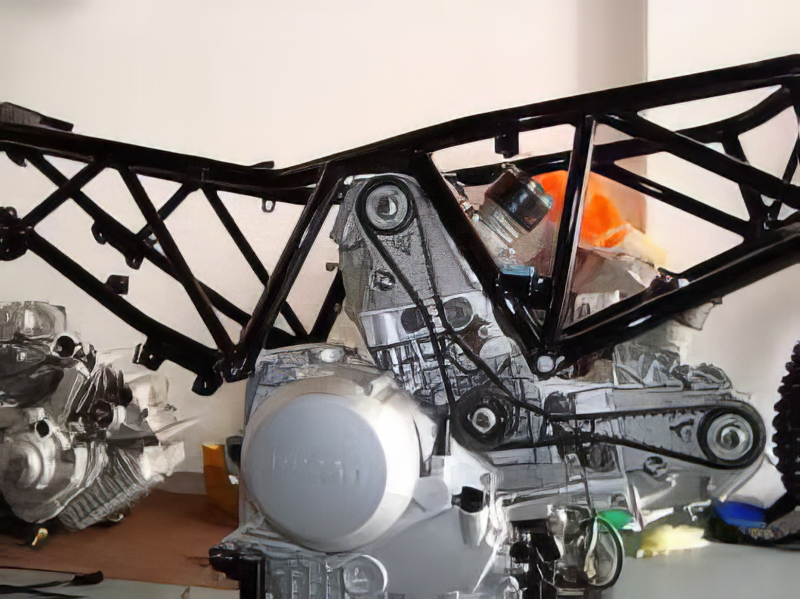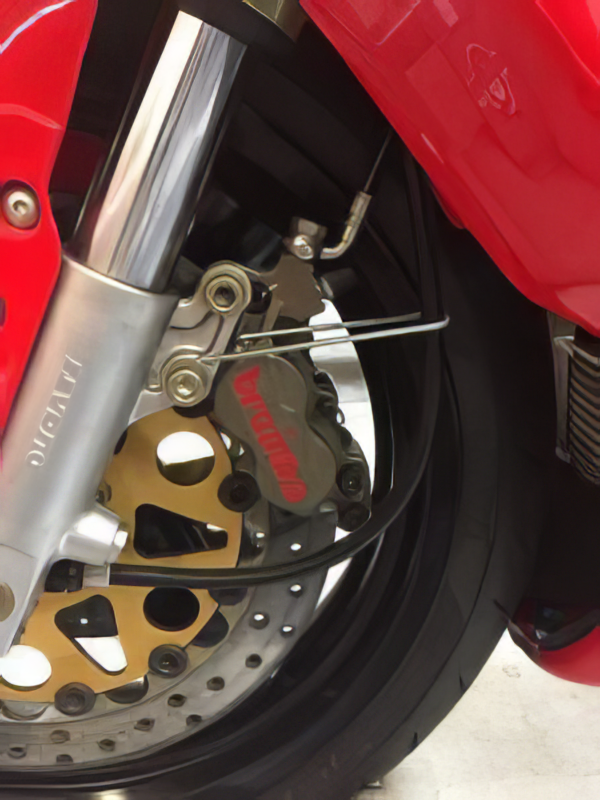For Ducatisti, the designation 'SS' is the Holy Grail. It all started with the 750SS, followed by the Ducati 900SS. Hosanna! But the royal axis blocks became dated and very expensive to produce. Ducati had to move on. In 1989, the title 'SS' was reinstated with a completely new generation of Ducati SS models.
Ducati 900SS: No longer the fastest Ducati
The new SS was no longer the best of the past. It was introduced as a kind of consolation prize for those for whom the 851 series was out of reach. An 851 cost around 34.000 guilders at the time. The Ducati 900SS was almost ten grand cheaper. In the spring of 1991, the Ducati 900SS received a major upgrade with Japanese Showa suspension elements, Mikuni carburetion and a new ignition. This caused quite a stir among hardcore Ducati fans. They were furious. But it did make the Ducati a much better motorcycle.
Basic, but reliable
The Ducati 900SS remained an air-cooled L-twin with two desmodromically operated valves per cylinder, and now with Mikuni carburetors. But like a real Duc, the newcomer was simple, light, fast and sharply steering. In line with the classic ideas, there was also a Ducati 750SS. This was more modestly equipped with less cylinder capacity, half a fairing, only one disc in the front wheel, a simpler USD front fork and a different exhaust system.
The engine of the Ducati 900SS was the simplest engine that Ducati offered. The air-cooled L-twin with its two valves per cylinder, timing belt-driven single camshaft per cylinder, a dry clutch and a six-speed gearbox had little more to offer in terms of excitement than an oil cooler. And then there were those darn Japanese carburetors. Previously, the 904 cc Duc breathed through a difficult-to-adjust double Weber.
The carburetors were now user-friendly Mikuni semi-downdraft carburetors. To house these useful parts between the two cylinders, different intake pipes and a new airbox were designed. This also resulted in a nicer power curve.
The maximum power of the twin after this modification was 84 hp at 7000 rpm. This modified carburetion transformed the big twin-cylinder into a better-performing block. The Ducati 900SS ran best between 3000 and 7000 rpm. With all that playing and fussing, an Italian consumed about 1 in 15. The range of the SS was about 250 kilometers. The rider had to rely on a fuel warning light, as there was no spare fuel tap. How accurately did that light indicate the fuel level? Well, fortunately such a Duc is not too heavy to push.
The machine, weighing only 183 kilos, is also pleasant to operate, offers acceptable comfort for its class and feels much faster than it actually is. The top on the counter was about 235 km/h, but in practice this was about 210 km/h. Well, in a country where you can only drive 130 km/h after seven hours on some roads, that's not a disaster, right?
Let this bike trot along winding roads and pay attention to speed cameras, especially just after bends. Because the Ducati 900SS enjoys being chased through the bends on the gas.





It had just left when we returned from the south of France with our Opel with a caravan behind it. We were regularly overtaken by a Dutch Ducati 900ss. As a motorcyclist you notice it the next time you see it. Then he stood at a gas station, then he stood next to a police car talking to the gendarmes and then a little further away in a parking lot he shook his arms and shoulders loose. When we stayed overnight at a municipal campsite in northern France and walked through the village, that Duc was parked behind a hotel. The next morning we were overtaken again in a traffic jam by the same motorcycle. Between Luxembourg and Liège we stopped for a cup of coffee (an advantage that you have with a caravan over a ride on your motorcycle) and the Ducati also drove into the parking lot. He told us that he was on his way home from Spain, he had been able to talk his way out of a report with those officers and he thought it was great that we had kept such a close eye on him. A few weeks later, Motor 73 ran a compelling story about how their test rider had ridden home from the Pyrenees in one go on that new 900Ss. The photos showed it was the same engine. Not a word about agents or stops to loosen the stiff shoulders and the overnight stay was completely skipped. Since then I no longer believe all the stories that test riders write about their trials.
Friend of Italian bicycles or not, they remain magnificent-looking creations with a unique character. The desmodromic valve control is and remains a unique example of ingenuity. In the meantime we have arrived at bicycles such as the 1199 panigale. A monster with about 172 horses in the stable. And when they start galloping, all hell breaks loose. Just the sound of such a fast Duc makes the usefulness of a prescription for Viagra evaporate. But how reliable are those Duucjes? I will never forget how Ducati was praised to the heavens by the assembled motorcycle press because they had managed to put the engine management in a box that was about the size of a value pack of paracetamol. A streetmate's 999S also had something like that on board. My street companion and his girlfriend, who also rides a Ducati, left for a day trip. His girlfriend started her more well-behaved Duucje and was already on her way and out of sight. However, my street companion needed a value pack of paracetamol when his brand new 999S stopped dead after three starting attempts. After investigation by the conscientious dealer, the vaunted Italian electronic miracle box turned out to have some kind of fried contents. Under warranty the box was replaced with an update and I heard him driving away on that red beauty many times. That sound, boy. An open clutch cover was the icing on the cake. Too bad that coupling of that thing required so much force
Don't think in details. Just don't think. Go for the emotion. And despair is also an emotion
Certainly despair is an emotion. This was clearly visible when the Duc did not want to start.
Not long after, all our emotions would be severely tested when the boss and owner of the local Ducati dealer, the specialist in this region, suffered from a front fender that apparently had not been properly attached during a test drive. Forgot screws. It was just a small detail with disastrous consequences. The mudguard folded forward during the test drive and acutely blocked the front wheel. The result was a horror crash. The man died as a result. You can assume that for that neighbor (owner of the 999S) and me, life came to a complete standstill here.
In any case, if the details had not been thought through, Blauwtje would not have become what he is now and he would probably have ended up in a parts mess somewhere. I was forced to think in inventive detail to achieve the goal for several reasons. In any case, Ducati also thought about the details and turned the 999S into a reliable workhorse. Don't refuse, just goaaaaaaan. In fact, it went so well that the neighbor had to have new Avon rubber put on it every 3000km!! You should have seen those tapes then. The frayed edges were hanging out. Also next to the middle of the band 😬😎